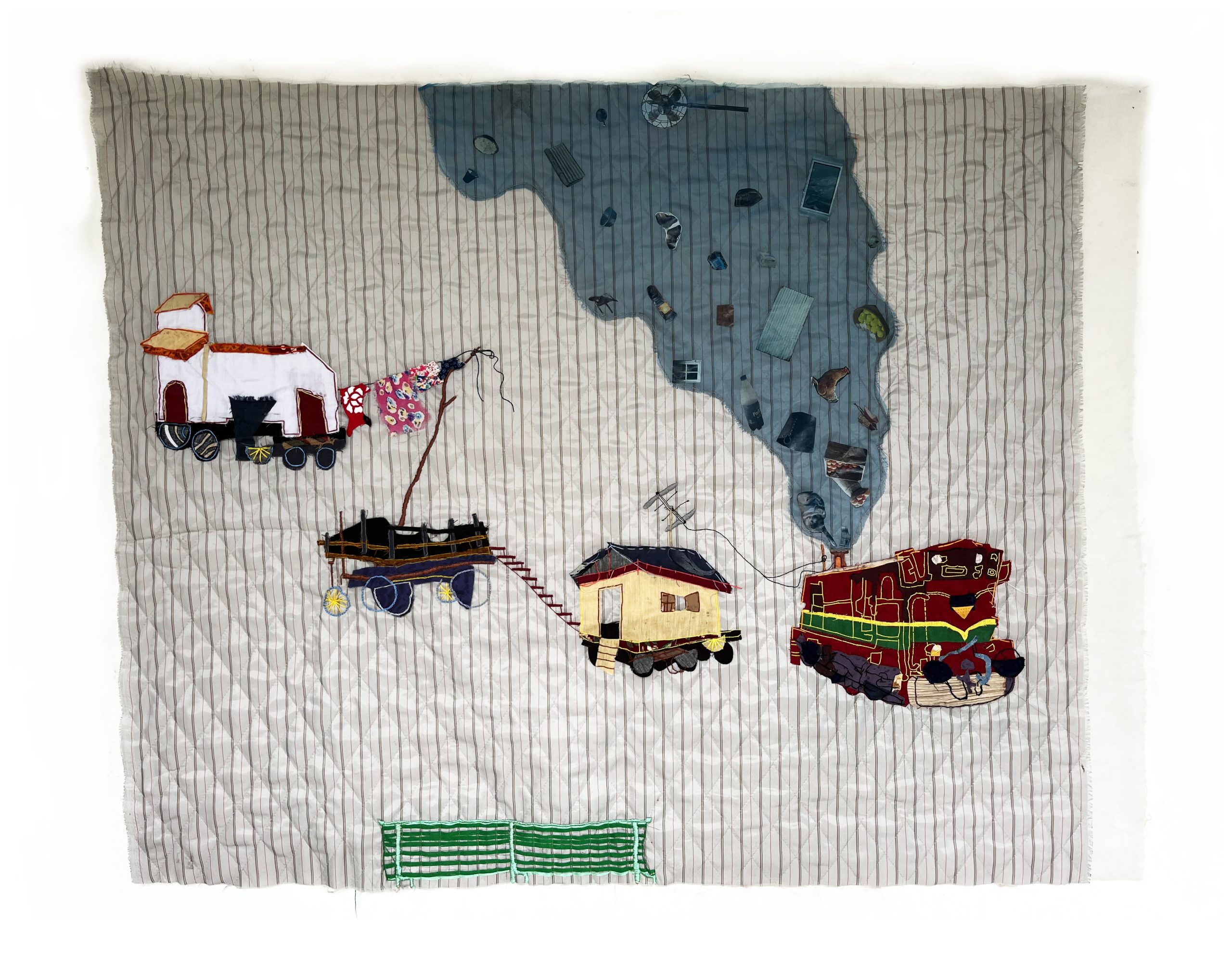COLOMBO, Sri Lanka – Hema Shironi was, rather unusually in Sri Lanka, raised both Catholic and Hindu. Due to her father’s career as an (outspoken) government official in the early 1990s and 2000s, she had lived in four of the country’s nine provinces by her 20s. Trained at the University of Jaffna, a college known to produce daring artists in Sri Lanka, Shironi searches for home and community beyond geographical boundaries and ethnic and religious labels in her embroidery and appliqué work. In that sense, she belongs to the movement of contemporary Sri Lankan artists exploring their real and imagined homes during and after the Civil War between the country’s government and the terrorist organization Liberation Tigers of Tamil Eelam.
Shironi, who was a teenager when the three-decade war ended in 2009, depicts the burdens and joys that accompanied her frequent movements within the country with a childlike curiosity in her exhibition at Saskia Fernando gallery. She finds refuge and belonging in the needle and thread — perhaps the only constant in her life. The vibrant patchwork and appliqué of “The Lord Your God Is With You” (2024), for instance, suggests a child’s excitement about a road trip to a new home. In the work, a truck is emblazoned with blessings for a safe journey in Sinhala, Tamil, and English, the country’s three official languages. In the series Jewels of Forgotten Memories (2023), she delicately stitches maps of lands, outlines of houses, and other embroidered interventions into black and white childhood photos of her extended family, friends, and neighbors from the Eastern and Central provinces. She sets them in boxes from shops in Sri Lanka that carry authentic gold and jewels, suggesting that these mementos are equally precious.
Shironi bridges not just spatial but also psychological and temporal distances. In “Up in the Air and Down” (2024), she stitches together an image of a colorful seesaw with baby quilts, collaging in photographs of female relatives and their graves via thread and needle — a fearless and potent acknowledgment of her matrilineal inheritance. And in “199 Miles Away” (2024), she embroiders objects signifying movement, such as a train, cart, and makeshift caravan-like home, the plume of smoke from the train withering away her family’s valued furniture and household items.
In several works, Shironi meditates on the iconography of the Sri Lankan flag, meant to symbolize solidarity and prosperity. She plays with the flag’s lion and its maroon, green, and orange colors, which signify the country’s main ethnicities of the Sinhalese, Muslim, and Tamil, respectively. In “Faded: Should be Respectfully Retired and Replaced with New Ones” (2024), she reproduces only part of the flag, its threadbare colors hanging loose, suggesting that the idea of the nation has lost its value due to rifts between these ethnicities during recent events like the Civil War and the 2019 Easter Bombings.
Her boldness in engaging with such iconography should be seen as part of a trend of local artists dissecting the realities behind the political chaos of Sri Lanka. But these works are also deeply personal to her as an artist with mixed ethnic and religious identities, living outside the majority-focused cultural and political landscape of the country.


Hema Shironi: Families ‘Not’ In the List continues at Saskia Fernando Gallery (41 Horton Place, Colombo) through September 5. The exhibition was organized by the gallery.

